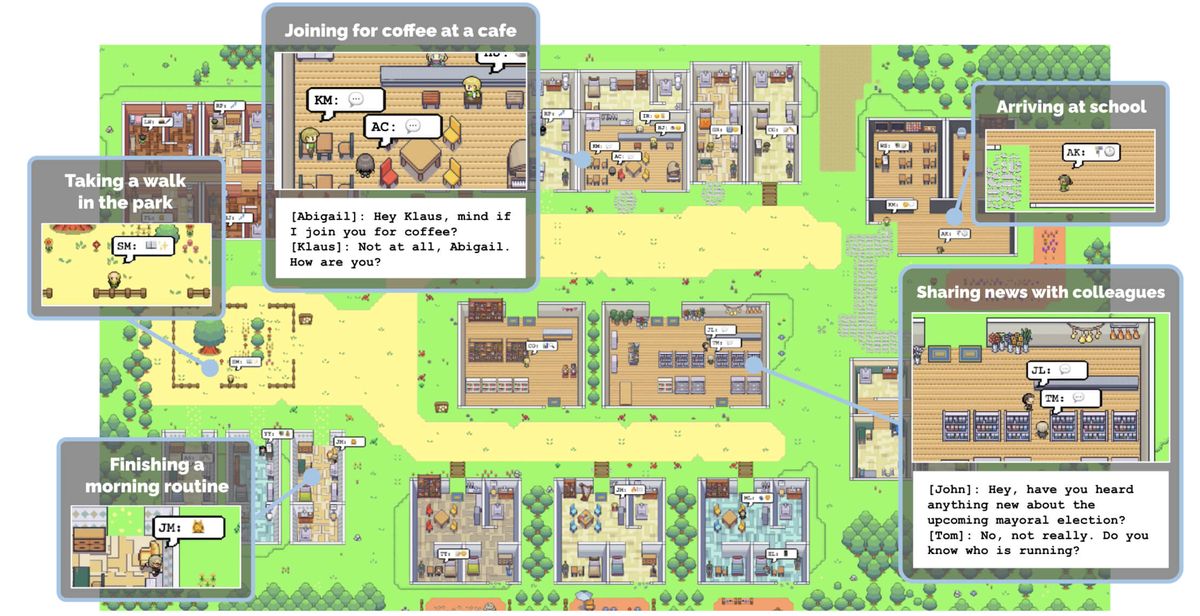
A fascinating research paper from Google and Stanford has used ChatGPT to create human-like characters living in a contained world called Smallville, resembling a video game. These generative agents have preloaded personas and follow routines like waking up, interacting with each other, and attending parties.
Can you imagine a world where you can interact with virtual characters that behave just like real humans? These agents have personalities, preferences, skills, and goals, and can remember past experiences and reflect on current situations. They perform various actions and react to events, making the experience of interacting with them more realistic and engaging. Some even developed careers and political interests, such as Sam who decided to run for mayor after being involved in local politics.
To demonstrate the potential of generative agents, the researchers created an interactive sandbox environment inspired by The Sims, a popular life simulation video game. The environment features 25 agents with different personalities, preferences, skills, and goals, allowing users to interact with them using natural language. These agents can influence each other and their surroundings, leading to dynamic and evolving scenarios.

Generative agents use an architecture that extends a large language model (LLM) to store a complete record of the agent's experiences using natural language. The architecture consists of three main components: observation, planning, and reflection. These components work together to enable generative agents to generate realistic and consistent behaviors that reflect their personality, preferences, skills, and goals. Users can ask generative agents questions or initiate conversations, and the agents can respond based on their observations, plans, or reflections.

An evaluation study showed that generative agents were rated higher than scripted and random agents on all aspects of believability. They were also rated higher than human actors on coherence and consistency. Generative agents have many potential applications in various domains, including entertainment, education, and research. However, there are still limitations and challenges that need to be addressed, such as errors or inconsistencies and ethical or social issues.
Generative agents are a promising direction for future research and development. By fusing large language models with computational interactive agents, this work introduces architectural and interaction patterns for enabling believable simulations of human behavior.

